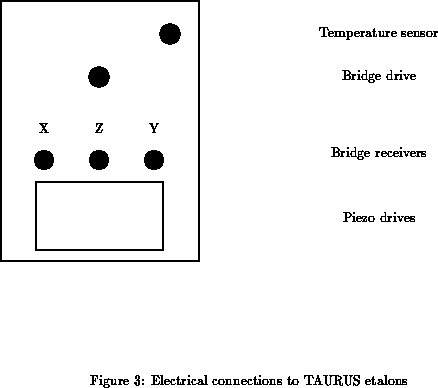
Previous: Installation and alignment of Fabry-Perot etalons
Up: Installation and alignment of Fabry-Perot etalons
Next: Loading etalons
Previous Page: Installation and alignment of Fabry-Perot etalons
Next Page: Loading etalons
Each etalon appears physically as a circular black cell containing a pair of coated glass plates. Towards the top of the cell is a flange, in which the following sets of holes are drilled:
On the side of the etalon cell is a connector block to which various electrical connections are made. A schematic diagram of the connector block, showing the function of the various connectors, is shown in Figure 3.